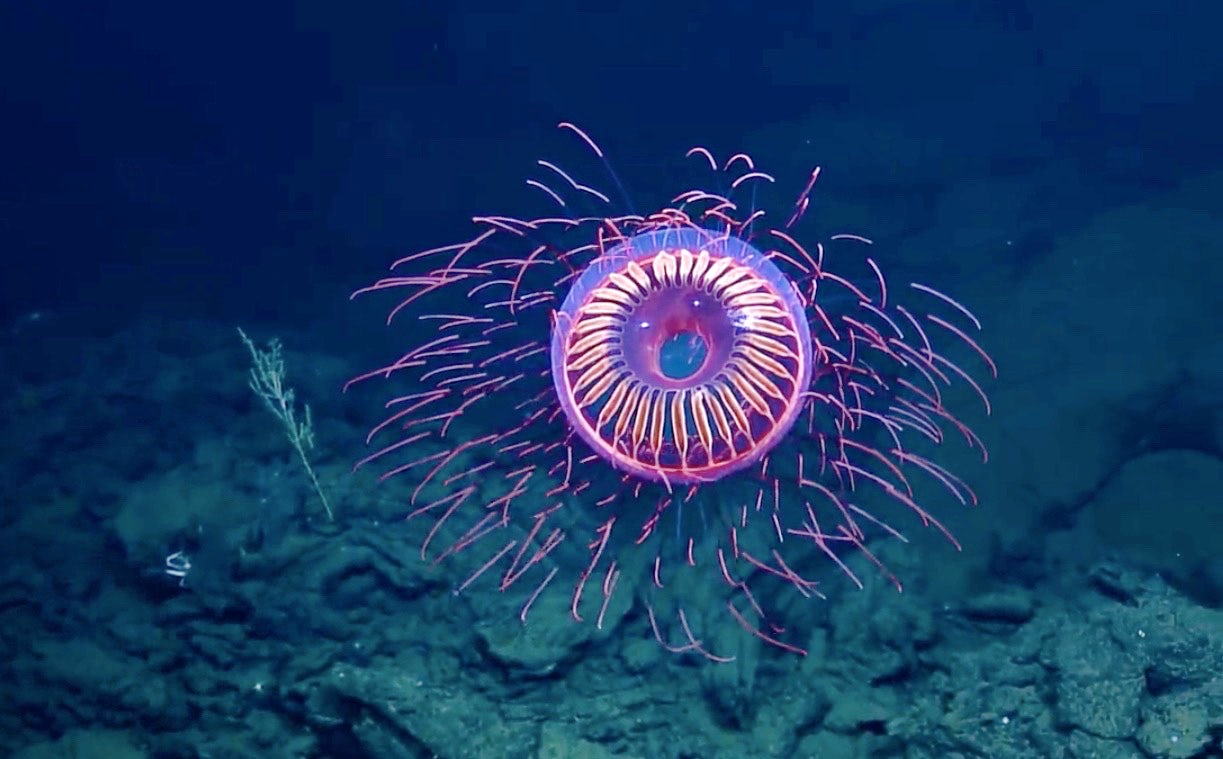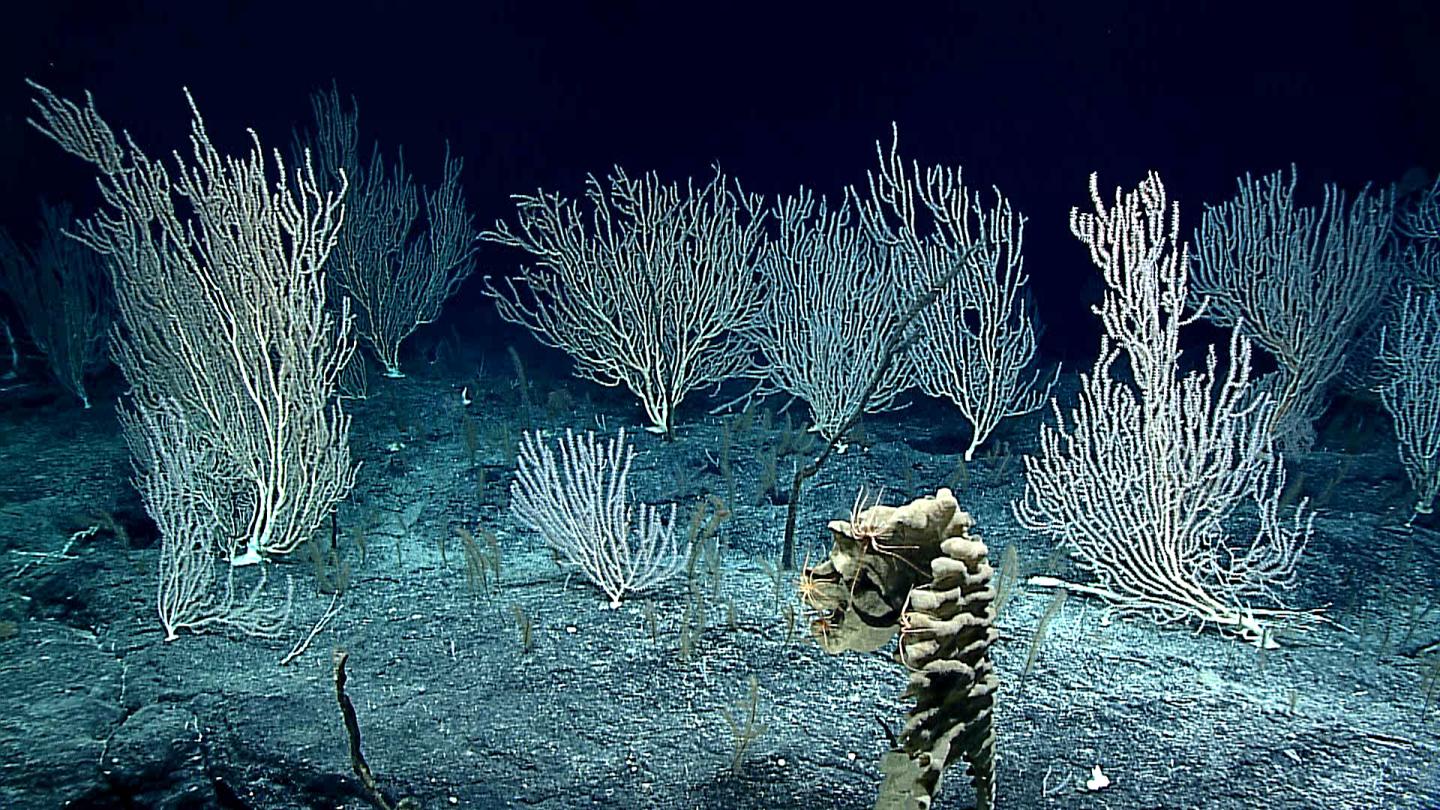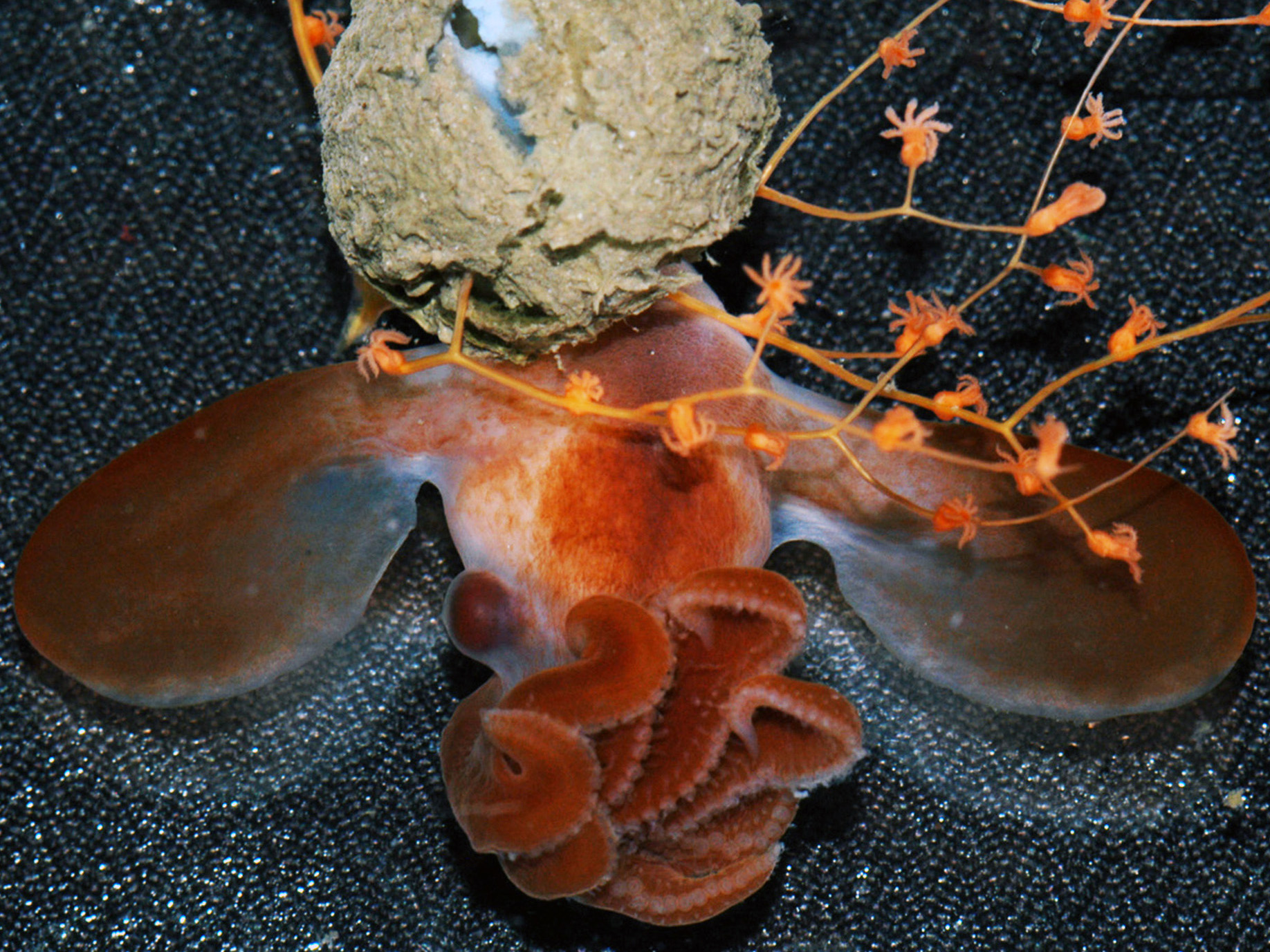MATTHEW O. BERGER on OCEANS DEEPLY | 22 January 2018
Determining whether new immunotherapies are successfully fighting cancer cells can be difficult and expensive. Creatures from the depths of the ocean might be able to change that.
Those were the findings of a recent research project, and they underscore what a number of scientists and companies have been discovering – marine life, both known and as-yet-undiscovered species, may hold answers to some of the most pressing medical problems. But these new discoveries are coming as deep-sea habitats face growing threats from climate change, overfishing and seabed mining.
Dr. Preet M. Chaudhary calls the new product his team has developed to test the effectiveness of immunotherapies “Matador,” after El Matador State Beach in Malibu, a favorite local spot for the University of Southern California professor of medicine and study co-author. “The beach is just too beautiful for us to ignore,” he said.
But the animals Matador is derived from come from much farther away.
Chaudhary and his team engineered a way to implant inside cancer cells the enzymes that allow deep-sea shrimp and crustaceans to glow in the dark depths of the oceans. They say that will allow scientists to more cheaply and quickly identify when new immunotherapies are working and thus should be pursued.
Traditionally, the way those immunotherapies – treatments that use the body’s immune system to try to kill cancer cells – are evaluated is by inserting radioactive chromium in the cancer cells. “Imagine the cell is a bag and you fill it up with radioactive chromium,” Chaudhary said. “If the immunotherapy kills it, the chromium leaks out.”
Doctors can then measure the leakage and calculate how many cells have died and whether the treatment is working. But it can be expensive – both to dispose of the radioactive substances and to buy more chromium since its half-life is relatively short.
With the advent of new and potentially game-changing immunotherapies like CAR T-cell cancer therapy, Chaudhary said new ways of evaluating whether those treatments are actually working need to be developed.
The enzymes that cause sea life to glow, called luciferases, have been used in a number of other applications for years, but Chaudhary said this is the first time they have been used as an immunotherapy test, or assay.
“We found that luciferase is very bright,” he said, and this method “can be done with equipment that isn’t very expensive.” If cancer cells die, the luciferase leaks out and glows, and the level of brightness can then be measured with a luminometer to reveal how many cells have been killed, sometimes down to a single cell, according to a study the researchers published this month in the journal Scientific Reports.
The innovation adds to a growing number of applications for bioluminescence and other features of the unique genetics of marine life from the deep sea.
The drug-discovery company Sirenas is scouring the natural environment, starting with the ocean, using what it calls “deep data mining approaches to uncover the relationships between small molecule metabolites” in a search for hidden therapeutic potential. The San Diego-based company is backed in part by the Gates Foundation, which hopes the search will yield new treatment options for tuberculosis, malaria and other infectious diseases.
Spain’s PharmaMar bills itself as the world leader in the search for and development of marine-derived anticancer drugs.
“Even though it is land that has provided us with medicine such as penicillin and aspirin, we think that in the sea we could also find pharmaceutical compounds,” Carmen Cuevas, director of research and development for PharmaMar’s oncology unit, said in an email. She noted that the ocean contains as much as 80 percent of life on Earth and marine life had a several-million-year head start on terrestrial organisms.
Cuevas said PharmaMar deploys a team of divers and marine biologists on six expeditions a year to collect samples in search of substances evolved to help ocean life with defense, predation or communication that might also help humans fight cancer. That search has so far yielded a chemotherapy drug that fights soft tissue sarcoma and some ovarian cancers as well as the ongoing development of marine-derived compounds that might treat small-cell lung cancer, endometrial cancer, breast cancer and some types of blood cancers, according to Cuevas.
“There are still many organisms to be collected that, without any doubt, will arrive to become therapeutic alternatives for all types of illnesses not just oncological,” she added.
PharmaMar expeditions only collect samples in depths of 60 to 260 feet (20 to 80 meters). There may be a whole world of potential drugs in the vast depths of the ocean outside that range. And just as species in shallower waters are threatened – “what we really observe is the damage that certain types of fishing have on the sea,” Cuevas said – deep-ocean organisms that may have therapeutic potential may disappear before scientists discover those benefits.
“Climate change is everywhere across the world’s oceans – it’s self evident to non-experts who see coral bleaching in shallow depths of the tropics and coastal flooding in low-lying cities,” said Tadeusz Molinski, a University of California, San Diego chemistry professor who specializes in searching for drugs that can be developed from marine life.
“The environment is so extreme and exotic that deep-sea organisms are likely to have evolved in ways that diverge from those in more benign environments,” potentially yielding unique products and therapies, said Molinski, whose discoveries include phorboxazole, an anti-tumor compound derived from an Indian Ocean sponge.
“Up to now, the technology for recovering samples from the deepest trenches of the world’s oceans has been prohibitively complex and expensive,” Molinski said, “but that is changing.”
If climate change harms deep-sea life, it won’t just be a loss to marine ecosystems but, potentially, to medicine.
This article originally appeared on Oceans Deeply. You can find the original here. For important news about our world’s oceans, you can sign up to their Oceans email list.






